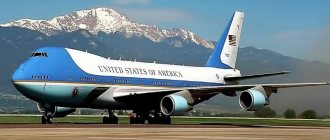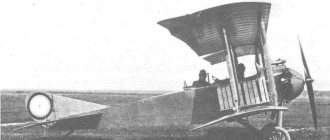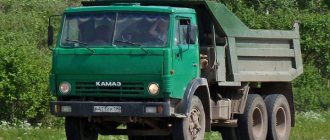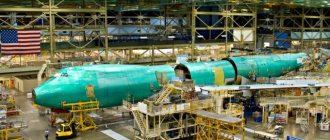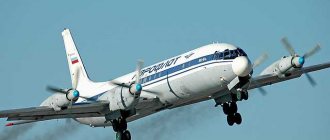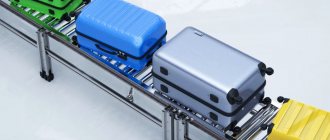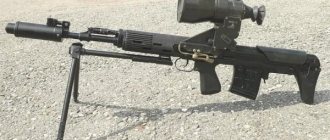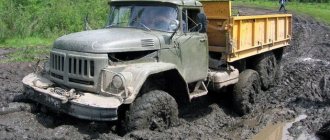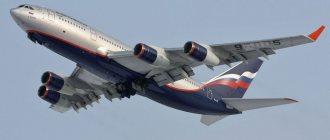The An-124 "Ruslan" military transport aircraft was the largest aircraft in the world (until the appearance of the six-engine An-225 "Mriya" in 1988), and also the leader in terms of payload capacity. The American Boeing 747-8F was able to take the palm only in 2005. The unique design of the cargo compartment, high capacity and reliability allow the vehicle to remain in demand today.
The Ruslan was produced in 1987...2004, it is still in use, the fleet is slowly becoming outdated, and there is no replacement for it yet.
History of creation
Created in 1965, the world's first wide-body army transport aircraft, the An-22 Antey, opened a new page in the rivalry between the USSR and the USA for primacy in the development of high-lift aircraft.
The American response was the Lockheed C-5 Galaxy transport, which was noticeably superior in all characteristics to the An-22. In 1966, a decree of the Central Committee of the CPSU and the Council of Ministers of the USSR was issued on the start of the development of promising aircraft with a payload capacity of at least 100-120 tons.
To develop the new vehicle, it was initially planned to use the Antey fuselage, equipped with a swept wing and turbojet engines. However, the expected characteristics did not suit the customer, and in mid-1968 two new projects were ready, one of which was designated An-124.
After a detailed study of the technical specifications, it was decided to completely rework the concept and design of the machine. The development of blueprints for the Project 400 aircraft began in 1976.
When developing the An-124, the principle of a comprehensive target program was used for the first time, which provided for the joint improvement of all components responsible for the efficiency of the aircraft.
The program contributed not only to accelerating the development of the aircraft, but also to the further development of the Soviet aviation industry.
As a result of complex work, it was possible to reduce fuel consumption by 15% and increase navigation accuracy by 4 times. The labor intensity of servicing the An-124 has decreased several times compared to the Antey.
The construction of the first copies of the machine for static tests was carried out at the KiAPO aircraft plant in Kyiv. Workshops with a span length of up to 100 m were built specifically for the assembly of large-sized An-124 Ruslan aircraft. Turbofan engines lagged behind the aircraft in terms of development.
Bench runs began several months before the planned first takeoff of the An-124. The first prototype was ready at the end of October 1982. Due to the unavailability of the power plant, the aircraft was tested in taxiing mode and short runs.
The first flight of the An-124 took place at the end of December under the control of experienced testers V.I. Tersky and A.V. Galunenko.
The car stayed in the air for about an hour, but during landing the landing gear elements were damaged due to the “shimmy” phenomenon that arose. Further flights revealed the engines' tendency to surge. The defect plagued the An-124 for several years. At the end of 1984, the second test copy of the aircraft was ready.
The official presentation of “Ruslan” took place in the spring of 1985 at the annual aviation show held in France (Le Bourget), and at the end of 1986 the aircraft passed state tests, and entered service with the troops in 1987.
In 1992, the An-124 received an official certificate allowing operation as a civil aircraft. Production of Ruslans was carried out in Kyiv (17 serviceable An-124 aircraft were built) and Ulyanovsk (33 aircraft were assembled).
Over the years of operation, four aircraft were lost in accidents, including the crash of the second test copy of the An-124. The plane crashed during test flights aimed at obtaining a civil airliner certificate.
The biggest disaster involving the An-124 was the crash of a car with tail number RA-82005 into residential areas in Irkutsk. The cause of the disaster, which claimed the lives of 72 people, was overload and surging of the engines due to gross violations of maintenance standards.
The Winged Pride of Russia (Part Eight) – An-124
The An-124 “Ruslan” (according to NATO classification “Condor”) is a truly unique serial transport aircraft that has no analogues in terms of cargo cabin dimensions and payload capacity. The An-124 heavy long-range military transport aircraft was developed at the OKB Antonov Design Bureau and today is the largest serial military transport aircraft in the world. "Ruslan" is intended for long-distance transportation of standard combat and service equipment of an airborne or motorized rifle division (brigade), parachute landing of military equipment (with crews and crews) and cargo, as well as transportation of large and heavy cargo for national economic purposes. The Ruslan prototype first flew on December 21, 1982 in Kyiv. The aircraft was lifted into the air by a crew of eight test pilots V.I. Tersky (vessel commander) and A.V. Galunenko, as well as flight engineers V.M. Vorotnikov and A.M. Shuleschenko, navigator A.P. Poddubny, flight radio operator M. A. Tupchienko, leading testing engineers BC Mikhailov and M. G. Kharchenko. Serial production of the aircraft was launched at the Ulyanovsk AIC of Aviastar JSC and KiAPO.
The An-124 Ruslan returned the world leadership in heavy transport aviation to the Soviet Union, depriving the American Lockheed C-5 Galaxy of the championship. In 1985, the Soviet An-124 aircraft managed to set 21 world records, among which was a record for carrying capacity (it lifted 171,219 kg to a height of 10,750 m), and on May 6, 1987, the aircraft with the crew of V.I. Tersky set a world record flight distance record, covering 20,150.92 km. along a closed route.
In 1985, "Ruslan" was first shown at the French air show in Paris. The following year, Aeroflot began operating the aircraft. It primarily operated flights on Siberian airlines, carrying very large cargo intended for industrial oil and gas development. The aircraft entered service with the USSR military transport aviation in January 1987. As of 1998, 54 flight examples were produced, as well as one airframe for static testing. Currently, the An-124 is used by 2 regiments of the Russian military aviation aviation (25 aircraft), as well as 6 private airlines in Russia and Ukraine.
Aircraft production may begin again in the very near future. By 2022, the Russian Ministry of Defense plans to purchase up to 10 An-124 Ruslan aircraft, and about 60 more aircraft are ready to be purchased by private airlines. In any case, Ukrainian and Russian companies will be able to profit from the resumption of production only if they have firm orders for more than 30 vehicles. Currently, this aircraft is one of the most in demand on the air cargo market, which allows us to hope for the resumption of its production.
It would be hard to believe, but a military transport aircraft created in the USSR today flies in the interests of NATO. Recently, Russian and Ukrainian airlines again won the tender to perform strategic air transportation for NATO as part of the SALIS program. A joint application for participation in the NATO tender was submitted on April 4, 2012 by the Russian group and the Ukrainian state-owned enterprise Antonov. The capabilities of the joint fleet of heavy An-124-100 military transport aircraft, as well as their modifications, were presented to the attention of the tender committee.
Thus, An-124 Ruslan aircraft will continue to transport cargo in the interests of NATO. The Ukrainian-Russian alliance has previously carried out transportation in the interests of 18 countries participating in this program. From March 2006 until the submission of an application for participation in the tender, An-124 aircraft made more than 2,100 flights, delivering more than 120 thousand tons of cargo for both civil and military purposes to various countries. The current contract will be valid until December 31, 2012.
Description of design
The fuselage of the An-124 Ruslan cargo aircraft has two decks, which are divided into specialized sealed compartments for ease of maintenance and operation. The cargo compartment is designed for transporting goods and equipment. The upper front deck is designed to accommodate the main and replacement crew (7 people each), as well as equipment. The upper rear deck is used to accommodate persons accompanying cargo and equipment. The forward and rear parts of the fuselage (the nose part is folding) are equipped with cargo hatches, which allow you to quickly load and unload even non-standard cargo from two directions of your choice.
The Ruslan's cargo compartment is pressurized and pressurized, its length is 36.5 meters (without ramp - 26.5 meters), compartment width - 6.4 meters, height - 4.4 meters, volume more than 1000 cubic meters. meters. It provides transportation of cargo with a total weight of up to 120 tons, parachute landing of cargo with a total weight of up to 100 tons on special platforms, as well as equipment and cargo that exclude the use of platforms. The floor of the cargo compartment is made of titanium alloy and allows loading of all types of non-self-propelled and self-propelled vehicles, both wheeled and tracked, with an axle load of up to 12 (10) tons when placed in one (two) row. Roller equipment allows unloading and loading of monolithic cargo weighing up to 50 tons. The use of supercharging allows the aircraft to carry up to 88 passengers at altitudes of up to 8,000 meters without using oxygen equipment.
The Ruslan's multi-wheeled landing gear (24 wheels) with a squatting system allows the aircraft to change its parking clearance, as well as the angle of the fuselage to reduce the angle of inclination of the ramps and facilitate the loading and unloading process. Each main landing gear includes 5 independent two-wheel struts, the front landing gear consists of two struts with 2 wheels. The front landing gear rotation control system allows a multi-ton vehicle to turn on a runway up to 50 meters wide when using engine thrust. To fully use all the combat capabilities of the aircraft, it needs a runway more than 3,000 meters long, but if necessary, the aircraft can fly even from unpaved runways.
The Ruslan power plant includes 4 D-18T turbojet engines designed by V. A. Lotarev (ZMKB Progress), with a capacity of 23,400 kgf each. With sufficiently high power, these engines are characterized by relatively low weight, as well as moderate fuel consumption and low noise. The maximum fuel weight on the aircraft is limited by its take-off weight and is 213,740 kg.
The on-board equipment of the An-124 military transport aircraft is intended for carrying out transport and landing missions and driving the aircraft in day and night conditions, in simple and difficult weather conditions, for a long time away from the main airfield, as well as in the event of opposition from the enemy. The Ruslan equipment includes an automated communications complex (TIP-15), a flight and navigation sighting system (PNPK-124) and a set of airborne transport equipment. The flight navigation and sighting system (PNPC-124) consists of radar stations (radars) for viewing the earth's surface and forward looking, an autonomous navigation system, an aviation radio compass (ARC), an optical-television sight, altitude and speed parameters, short-range (“Omega”) and long-range (“Loran”) navigation, equipment for guiding the aircraft in combat formations, a celestial navigation system and a state aircraft identification system. A total of 34 separate computers were used in the ship's control systems.
Modifications
of An-124-100
– is a civil modification of the An-124 aircraft, certified in 1992.
An-124-100M
– a modified version of the aircraft with a crew of 4 people and foreign avionics. The aircraft has no analogues in the world in terms of maximum payload capacity (100-120 tons), flight range and cargo cabin dimensions. In some cases, it can fly with a maximum payload of up to 150 tons. In this case, the decision to fly is made after analyzing the characteristics of take-off and landing airfields, the availability of alternate airfields, as well as weather conditions along the entire flight route.
Currently, the An-124-100 is operated by 6 airlines from Ukraine and Russia. The cost of this aircraft is estimated at approximately 70-100 million dollars. In 2000, the aircraft were upgraded with avionics (a commercial satellite communication system SAT-906 from Collins, an aircraft collision avoidance system TCAS-II, as well as an inertial navigation system on ring laser gyroscopes LTN-101 manufactured by Litton were installed). The lifting capacity of the onboard cranes was increased to 30 tons, and the crew was reduced to four people. The engine nacelles were equipped with sound-absorbing elements, which allowed the aircraft to meet international sound noise requirements An-124-102
– a modification that has a new information and control field for the crew cabin consisting of 3 people.
Currently, Ruslan has firmly taken its place in a fairly small list of aircraft that have not only performed well in the air transportation market, but have themselves created a new sector in this market.
In the first 5 years from the start of commercial operation of Ruslans, the average annual growth in air transportation of unique cargo was 26%. The number of US companies alone that resorted to the services of the AN-124-100 doubled every 4 years. All this was evidence of the enormous commercial success of the aircraft on a global scale. There have been very few such examples in the history of domestic aviation. According to experts, at present the An-124 “Ruslan” is only experiencing its youth; the aircraft will be able to operate for about 40-50 years without any problems. Tactical and technical characteristics of the An-124:
Dimensions: maximum wingspan – 73.3 m, length – 69.1 m, height – 20.78 m. Wing area – 628.5 sq. m. Aircraft weight, kg. - empty - 173,000 - normal take-off - 392,000 - maximum take-off - 405,000 Engine type - 4 D-18T Progress turbofan engines, thrust - 4x229.47 kN. Maximum speed – 865 km/h, cruising speed – 750-800 km/h. Practical flight range (with maximum load): 4,500 km. Ferry range: 16,500 km. Service ceiling: 9,500 km. Crew – 6 people Payload: 120,000 – 150,000 kg. cargo or 88 passengers (up to 350 seats in holds).
Sources used: www.arms-expo.ru/049049056057124050049049054.html www.armstass.su/?page=article&aid=108470&cid=25 www.airwar.ru/enc/craft/an124.html www.testpilot.ru/russia/antonov /124/an124.htm
Design
The all-metal fuselage of the An-124 aircraft is made according to the standard design for army transport vehicles with an upper swept wing. The tail unit is built according to a single-fin design. Composite materials were used in the manufacture of the fuselage and wing load-bearing kit.
The total weight of materials in the structure is 5000 kg.
Using this solution made it possible to reduce the weight of the empty machine by 2000 kg. The power structure of the fuselage is made up of transverse frames connected by longitudinal stringers and spars. The design uses working skin, which further increases the strength of the fuselage.
The 28⁰ swept wing has a high aspect ratio and a thick profile. The An-124 wing structure has four spars, the consoles are one-piece. The wing consists of three segments - nose, caisson and rear. The caisson is part of the aircraft's load-bearing structure and has a longitudinal and transverse strength set.
The mechanization of the control units consists of six sections of slats, which are installed along the nose of the wing along the entire span. At the rear of each console there is an internal flap and two additional sections of slotted flaps. Next to the flaps there are two ailerons and 12 sections of brake flaps.
The vertical tail of the An-124 aircraft consists of a fin and a rudder mounted on it. The steering wheel is divided into upper and lower sections. The keel is built according to a design with two spars and working skin. Horizontal stabilizers are made according to a similar design. The elevators, located on the rear of the stabilizer, consist of two elements - internal and external.
The An-124 fuselage has a profile in the form of two circles intersecting in the form of the number “8”, and is equipped with two decks inside. The radius of the upper circle is 1900 mm, the bottom – 3800 mm. The load-bearing frame and the casing are connected by welding and glue.
Some of the fuselage elements are made of carbon fiber, in particular the rear cargo hatch flaps.
Transverse sealed bulkheads divide the An-124 fuselage into several compartments. Sealing protects the underfloor compartments of the fuselage from flooding with rainwater and from the ingress of aggressive liquids (during transportation). The fuselage is equipped with a system of drainage holes to prevent fluid stagnation and corrosion. The upper front part is used to accommodate crew members (main and replacement).
Each An-124 crew consists of 6 people:
- crew commander;
- assistant commander;
- navigator;
- senior onboard engineer;
- flight engineer;
- radio station operator.
In addition to the personnel, the replacement crew compartment houses various flight equipment and life support systems. The equipment allows landing troops and delivering cargo at different times of the day under different meteorological conditions, as well as when countering enemy air defense systems.
The An-124 equipment includes a flight system with sighting and navigation units, a radio communication system, and special equipment for landing.
The An-124 cockpit is equipped with glazing attached to the cockpit frame. The replacement crew compartment has three round glazed windows facing to the side. Additional windows are made in the cargo compartment. They are designed to visually monitor the condition of engines and cargo compartment doors.
In the lower front part of the fuselage there is a cargo compartment adapted to accommodate military equipment.
The compartment runs along the entire length of the fuselage and is equipped with cargo hatches located in the forward and aft parts of the fuselage. The hatch openings are equipped with reinforcements. The useful volume of the compartment is 1050 m³. For loading and unloading, the An-124 aircraft is equipped with standard crane and mooring equipment.
The compartment contains two mobile cranes with a lifting capacity of 10 tons. Bridge-type units move on rails installed along the sides. Additionally, electric winches are installed, developing a traction force of up to 4500 kg. The lower deck equipment allows for the transportation of single cargo weighing up to 50 tons.
The section of the upper deck, located in the rear section, is intended to accommodate maintenance and accompanying personnel. The An-124 aircraft could accommodate up to 22 passengers. In most cases, the maintenance team consisted of two operators operating standard overhead cranes.
The personnel cabin is equipped with a pressure support system that allows flights at altitudes up to 8000 m without the use of oxygen masks.
The chassis is equipped with twelve supports. Of these, two are located at the front, and ten are located on the sides of the fuselage (five per side). All racks have two wheels and are equipped with individual independent suspension and a separate cleaning mechanism.
The front support does not have braking mechanisms, is equipped with a turning mechanism and allows the An-124 aircraft to turn on a runway 50 meters wide.
In this case, an asymmetric operating mode of the engines is used, which makes it possible to reduce the turning radius.
The landing gear doors of the An-124 are made of composite material to reduce weight. The main rack trolleys are equipped with a ground clearance adjustment system, which reduces the ramp inclination and simplifies loading and unloading. Structurally, the aircraft is designed for operation from runways longer than 3000 m, equipped with a concrete surface. In practice, the machines were successfully used from unpaved airfields.
The power plant includes four turbofan engines of the D-18T model. The installations were developed at the Zaporozhye design bureau "Progress" specifically for the An-124 and the even larger An-225 transport aircraft.
The engine is created according to a three-shaft design and consists of a compressor fan and two working rotors (low and high pressure). The design of the turbojet engine provides a high bypass ratio - up to 80%. The engines are located under the wing, on pylons. Additional TA-12 gas turbines are mounted in the chassis fairings.
The engine nacelles of the An-124 aircraft contain a pre-air preparation system for air conditioning systems in the cabins, as well as for the operation of the anti-icing system. Air is taken from the compressor, then it is cooled and supplied to the actuators under normal pressure.
The hydraulics of the An-124 aircraft operate from pumping units located on the engines. The units consist of two separate pumps.
Each system is autonomous and can provide fluid to all actuators.
Hydraulics operate the rudder system for controlling the aircraft, the extension and retraction of the landing gear, the flap drives, the braking and wheel control system, and the cargo hatch drives.
The electrical network of the An-124 is designed for alternating voltages of 115 and 200 V. The generating sets are located on turbofan engines and have a total power of 240 kVA. The fuel supply is located in the center section caissons.
There are 13 separate fuel tanks divided into 4 output stages. Gradual development allows you to maintain the alignment of the aircraft. The weight of fuel in tanks is up to 213 thousand kg.
Structure of the An-124 "Ruslan" aircraft
It is based on the design of a turbojet four-engine aircraft with a swept wing and single-fin tail. D-18T aircraft engines were installed. Consists of two decks. The lower one is a cargo cabin (total volume - 1050 m³), and the upper one is divided into crew cabins, replacement crew cabins and accompanying cabins (capacity - up to 21 people).
For normalized and stable flights of the Ruslan, specialized fasteners were developed and the critical norm of the wing was strengthened. All this was provided by the EDCS (fly-by-wire control system) and computer equipment installed for the first time on a non-maneuverable aircraft.
24 wheels located on a multi-post chassis ensure the aircraft can be used on unpaved runways. You can change the angle of inclination of the entire fuselage and change the parking clearance. These abilities are essential for more efficient trucking operations.
The cargo compartments are sealed. In front there is a crew cabin, a recreation department and a cabin for accompanying persons. The main task of the on-board equipment is to assist in carrying out transport and landing missions, regardless of the period of day, weather conditions, the presence of enemy air defense and its direct use. On-board equipment includes sighting and navigation flight systems, transport and landing equipment, and a special communications complex.
The An-124 aircraft is used to carry out NATO missions, although it is in service with the Russian Air Force.
It should also be noted that there are additional modifications to this aircraft. For special operations, it has onboard mobile cranes (OBCs) capable of lifting loads weighing up to 20 tons, and mooring equipment. The maximum weight of a monocargo without special permission reaches 50 tons.
Refueling is provided by a centralized system. This happens under pressure and specifically through four necks, they are located in the right and left nacelles of the landing gear. It is also possible to refuel by gravity through two filler necks; they are located on the upper part of the left and right wing consoles.
The An-124 is capable of transporting about 440 paratroopers or about 880 soldiers in full gear. But due to the experiments carried out in 1989, it was decided to introduce a restriction, since aerodynamic factors were not initially taken into account.
Technical characteristics of An-124
| Parameter | Meaning |
| Fuselage length, m | 69,1 |
| Midsection diameter, m | 7,68 |
| Cargo deck length, m | 43,45 |
| Cargo deck width, m | 6,68 |
| Cargo compartment height, m | 4,4 |
| Wingspan, m | 73,3 |
| Wing area, m² | 628 |
| Horizontal tail area, m² | 166,7 |
| Elevator area, m² | 49,75 |
| Chassis track, m | 8 |
| Maximum taxiing weight, kg | 398 000 |
| Maximum take-off weight, kg | 392 000 |
| Maximum landing weight, kg | 330 000 |
| Maximum speed, km/h | 530 |
| Takeoff length (depending on mass), m | 1000-2200 |
An-124 modifications
On the basis of the army An-124, a commercial version with the index 124-100 was created in 1992. The machine passed a cycle of certification checks and was found to meet the requirements.
Based on the 100 model, a modernized version was created under the designation An-124-100M. The aircraft used flight and navigation equipment manufactured in the CIS countries and Europe. The equipment made it possible to reduce the crew to four people and increase operational safety. To reduce noise, the engine nacelles are equipped with hoods with noise-absorbing elements.
Another option was the An-124-100M-150, featuring an increased payload of up to 150,000 kg and an extended range. With a load weighing 120,000 kg, the aircraft has a range of 5,400 km.
хDEЪ BNGNAMNBKEMKH YAEPKHIMNTSN OPNKHGBNDYARBU YAYULNKERNB YuM-124-100 NAYASFDUERYA SFE ME OEPBSHI TsND, NDMUYN RNNKEIN B MUVYUKE 2000-U SDYUKNYAE OPKHYARSOKHRE Y EE OPYURHVEYAYNI PEYUKHGYUZHHH. YaEPEEEGMSHI HLOSKEY OPNZHEYAYAS ASHK DUM ONYAKE HGAPIUMHYUKEYYAE hyYUYYHMY OPEDAEDUREKEL YANBERYU DHPEIRNPNB “YUBHYUYARYUPYU”. bNR VRN YAYUGYUK on ShRNL YYUL yuKEYYAEI hYAYUIYHM: "mu ShRNL NRBERYARBEMMNL ONYARS Kommersant MYULEPEM OPHDEPFKHBUREYA RYUKHU OPHMZHHONB, YUY YANAKCHDEMKHE AYUKYUMYU LEFDS KHMREPE YAYULKH TSNYASDYUPYARBU, YUZHKHNMEPNB KH YAYULNTSN OPEDOPKHURKH, BGYUHLNBSHTSNDMNE YANRPSDMHVEYARBN I YNMRPUTSEMRYULKH YKKHEMRNNNPKHEMRKHPPNBUMMNYARE. RUYFE YAVKHRYUCH YPYUIME BYUFMSHL SVYUYARKHE OPEDOPPHYRKH B PEYUKHGYUZHHH TSNYASDYUPYARBEMMSHU PETNPL B PNYAYAHYAYNI YUBHYUOPNLSHKEMNYARKH, YU BONYAKEDYARBHH - OPEBPYYYEMHE gyun "YBH" YUYARYUP-yao "B ONKMNOPYUBMNTSN VKEMYU nAZEDKHMEMMNI YUBKHYUYARPNHREKEMNI YNLOYUMXX." nDMNI KH BYUFMEIKHU YABNKHU GYUDYUV MU MNBNL ONYARS xYYUIYHM BHDHR BNGNAMNBKEMHE YEPKHIMNTSN BSHOSYAYU YYULNKERNB YuM-124-100 B sKEMNBYAYE.ON ECN LMEMKHCH, BNYAYARYUMNBKEMKHE OPNKHGBNDYARBU "PSYAKYUMYU" DNAFMN OPHBEYARKH Y NFKHBKEMKHCH B PNYAYAKHIYYYNL YYULNKERNYARPNEMHH, B GMYUVKHREKEMNI YAREOEMKH ONBKKHRE MU YANUPYUMEM HE GYU PNYAKHEI X sYPYUKHMNI BEDSYKHU ONGKHZHI MU LHPNBNL PSHMYE TsPSGNBSHU YUBHYUOEPEBNGNY, PYUYAHPHRE YANRPSDMKHVEYARBN pNYAYAHH X sYPYUHMSH OPH PEYUKHGYUZHHH LYUYARYUAMSHU OP NLSHKEMMSHU OPNEIRNB, YANGDURE PEYUKEMSHE SYAKNBKH DK MNBNTsN REUMNKNTSKHVEYAYNTSN OPNPSHBU B NAKYYARKH TsPYUFDUMYAYNI YUBKHYUZHHH. yPNLE RNTsN, BNYAYARYUMNBKEMKHE OPNKHGBNDYARBUYUM-124-100, MYUPDS I SFE PEYUKHGSCHYKHLYA KH ONDDEPFHBUELSHL MU TSNYASDYUPYARBEMMNL SPNBME MYUZHNMYUKEMSHL OPNEIRNL LNDE PMHGYUZHH RPYUMYAONPRMSHU YYULNKERNB xK-76rd (ld), LNFER YARYURE NDMNI HG MUHANKEE YULAKHZHNGMSHU X OEPYAOEIRKHBMSHU GYUDYUV PNYAYAKHIYAYNI YUBHYUZHNMMNI OPNLSHKEMMNNYARH MU AKKHFUI LXE 15-20 KER .
DEKN B RNL, VRN YAETSNDM OEPEBNGYH SMKHYUKEMSHU KH METSYUAYUPHRMSHU TsPSGNB MU yuM-124-100 BSDEKKHKHYAE B NRDEKEMSHI YAETSLEMR LHPNBNTsN PSHMYU TsPSGNBSHU YUBHYUOEPEBNGNY . I am 1993 ON 2004 CC. B ShchRNL YAYERNPE YUBKHYUTSPSGNBNTSN AKHGMAYU MYUAKCHDYUKYA SARNIVHBSHI PNAR NAZELYU OEPEBNGNY B YAPEDMEL OH 12.7% B TsND, YNRNPSHI B MUYARNYE BPEL YANYARYUBKJER 500 LKM DNAK . ХХХ 110 РШЯ. R TsPSGYu. ON OPNTsMNGYUL SCHIYAOEPRNB Y 2022 Ts. NAZEL OEPEBNGNY LNFER DNARKHTSMSRE 1-1.5 LKPD. DNAK. ХХХ 350-400 РШЯ. R TsPSGNB, VRN ONRPEASER DNONKMHREKEMN 40-50 BNGDSMSHU YSDNB RHOYU UM -124.
b OPNZHEYAYAYE BNYAYARYUMNBKEMKH OPNHGBNDYARBU OKYUMHPSERYA KHGLEMKHRE REUMKHVEYAYKHI NAKHY “PSYAKYUMYU” I REL, VRNASH, YANUPYUMKHB BYAYE NYAMNSHE OPEHLSYEYARBU, OPHDURE ELS F EKSHY PYD MNBSHU YUVEYARB. RYUY, OPEDSYALYURPHBUERYA GYULEMHRE YUBKHNMHYS, SBEKHVHRE TsPSGNONDZELMNYARE DN 150 R, SYARYUMNBHRE SYANBEPEMYARBNBUMMSHE DBKHTSUREKH. yPNLE RNCN, I LEYARKH DN VERSHPEU VEKNBEY ASDER YANIPYUYEM SHYHOYUF YAYULNKERYU. lNDKHTKHZHHPNBYUMMSHI YAYULNKER ONKSVHK MYUGBYUMKHE Yum-124-100l-150.
NDMHL XG OEPBSHU BYUFMSHU OPYURKHVEYAYKHU YUTsNB B DEKE BNYAYARYUMNBKEMKH YAEPKHIMNTSN OPNKHGBNDYARBUYUM-124-100 YARYUKN OPKHMIRKHE H ONDOKHYUMKHE YANNRBERYARBSCHYHLH B EDNLARBYULH X NPTSYUMKHGYUZHKHLH PNYAYAHH X SYPYUHMSH "PEYEMH N OEPBNNVEPEDMSHU LEPIUU ON BNGNAMNBKEMKHCH YEPKHIMNTSN OPNKHGBNDYARBU X ONSHPRYUOMNI LNDEPMHGYUZHHH YAYULNKERYU UM-1 24-100 MU OPEDOPHЪRKHU PNYAYAKHIYAYNI TEDEPYUZHHH X sYPYYUHMSH." YaETsNDM SFE TsNRNBSH AKHGMEYA-OKYUM H REUMKHYN-SHYNMNLHVEYAYNE NANYAMNBYUMHE OPNEIRYU. THMYUMYAHPNBYUMHE OPNTSPYULLSH OKYUMHPSERYA HG MEYAYNKEYKHU HYARNVMKHYNB, BYKCHVYU YANAYARBEMMSHE YAPEDYARBU SVYARMKHYNB OPNEYRYU, OPYUBHREKEYARBEMMSHE YPEDHRMSHE TSYUPYUM RXX, YARYUPRNBSCH THMYUMYANBSCH ONDDEPFYS YAN YARNPNMSH oPUUBHREKEYARBU pNYAYAHH, BNGBPYUR YAPEDYARB ON YNRNPNI ASDER NYASYYARBKЪREYA ON LEPE OPNDYUFH OPNHGBNDHLSHU YYULNKERNB , YPEDHRSH YNLLEPVEYAYHU AYUMINB X LEFDSMYUPNDMSHU THMYUMYANBSHU NPTSYUMHGYUZHHI (yaAEPAYUMY, bMERRNPTSAYUMY, 1FC , EBRD), B R.V. OND OPYUBHREKEYARBEMMSHE TSYUPYUMRKHH, SVYUYARKHE B OPNEYRE NRDEKEMSHU ONYARYUBYKHNB B YUVEYARBE OYUPRMEPNB I PUGDEKEMKHEL PKHYAYNB B NALEM MU OPEDNYARYUBKEMKHE YARYURSYU SHYYAYKCHGKHBMN CN ONYARYUBYKHYU, DEMEFMSHE ONRNNYKH NR YUBYUMYANBSHU OKUREFEY GYUYUGVKHYNB YYULNKERNB.
vRN FE OPNHYAUNDHR B PYULYUU PEYUKHGYUZHHH OPNEIRYU YAETSNDM? b UNDE PYUANRSH LEFDSMYUPNDMNTSN YUBKHYYNYALKHVEYAYNTSN YYUKNMY lyuya-2005 TsPSOOYU YNLOYUMKHI "bNKTSYu-dMEOP", yumry HL. OK yuMRNMNBU X gyun "YUBHYUYARYUP-yao" ONDOKHYUKH SVPEDHREKEMSHE DNISLEMRSH ON YANGYUMKHCH THKHYUKYU yumry HL. OK yuMRNMNBU MU gyun “YUBHYUYARYUP-yao” B sKEMNBYAYE. YAMNBMNI JEKSHN THKKHYUKYU ЪBKЪRYAЪ MYUSVMN-REUMHVEYAYNE YANOPNBNFDEMKHE OPNKHGBNDYARBU KH SHYYAOXYURYUZHHH YYULNKERNB YAELEEYARBU YUM-124. b YANNRBERYARBHH I YANTSKYUYEMHEL THKHYUK ASDER NYASYYARBKRE PUANRSH ON BMEYAEMHCH HGLEMEMKHI B RHONBSC YNMYARPSYZHCH OPNHGBNDHLSHU "YUBKHYUYARYUP-yao" YAYULNKERNB YAELEYARBYU UM-1 24-100 X YANGYUMKHCH MNBSHU LNDKHTKHYUZHHI, B R.V. I SVYUYARKHEL YAOEZHYUKHYARNB gyun "YUBHYUYARYUP-yao" X DPSTSKHU OPEDOPHYRKHI PNYAYAHYAYNI TEDEPYUZHHH. RUYFE OKYUMHPSERYA NPTSYUMHGYUZHH YAEPRHTHYUZHHH HGLEMEMKHI X YNMYARPSYRNPYAYNE YANOPNBNFDEMHE OPNKHGBNDYARBU X SHCHYAOXYURYUZHHH BYAU YYULNKERNB DYUMMNTSN YELEIYARBU B PNYA HIYAYNI TEDEPYUZHHH.
yPNLE RNTS, MU lyuya-2005 "bNKTsYu-dMYaOP" X YUBHYUYNLOYUMH "onKER" GUYKCHVHKH OPEDBYUPHREKEMSHE YANTSKYUYEMH I gyun "YUBHYUYARYUP-yao" N GYUYUGE X ONYARYUBYE DEYARKH YAYU LNKERNB YuM-124-100l-150
— OH ЪRE DKЪ YUFDNI YNLOYUMHH. mYUVYUKN ONYARYUBNY GYUOKYUMKHPNBUMN MU 2008 Ts.
yu BNNAYE ONRPEAMNYARKH "bNKTsKH-dMEOPYU" B MNBSHU "pSYAKYUMYUU" NZHEMHBUCHRYA B 15 YYULNKERNB, "onKERYU" - B 5-8 YYULNKERNB. MEINRNPNNE YNKKHVEYARBN yuM-124, BNGLNFMN, OPHNAPERSR "yuMRNMNBYAYKHE YUBKHYUKHMHH" X "yURKYUMR-YANCHG". 4-10 “PSYAKYUMNB” LNTsSR ONMYUDNAKHREYA NAZEDKHMEMMSHL yuPYuAYAYHL shLKHPYURYUL. murn X eBPNOEYAYKHI YANCHG RUYFE MSFDUCHRYA B YAYULNKERYUU ONDNAMNTSN RHOYU DK OPNBEDEMHJ PUGMNTsN PNDYU LHPNRBNPVEYAYKHU NOEPYUZHKHI. ONYARYUBYU YuM-124 BNGLNFMYU YUY MU SYAKNBKHU YUPEMDSH KKHGKHMTSYU, RYU X OPLSHU GUYSONY. REL ANKEE, VRN "bNKTSYu-dMEOP" SFE YANGDUKYU MU REPPHRNPKHH eBPNOSH AYUGS DK REUMHVEYAYNTSN NAYAKSPHHBYUMKH YuM-124.
TsPSOOYU YNLOYUMKHI "bNKTSYU-DMEOP" X bMESHCHYNMNLAYUMY ONDOKHYAYUKH MU lyuya-2005 YANTSKYUEMKHE, YNRNPNE OPEDSYALYURPHBUER DNATSNBPELEMMNE YANRPSDMHVEYARBN ON NPTsYUMKHGYUZHHH THMYUM YAHPNBYUMKH OPNTsPYULL BNGNAMNBKEMKH YAEPKHIMNTSN OPNKHGBNDYARBU SMKHYUKEMNTSN RFEFKNTSN RPYUMYAONPRMNTSN YYULNKERYU UM-124-100 X LNDEPMHGYUZHHH YYULNKERYU xK-76rd. b UNDE PEYUKHGYUZHHH YANTSKYUEMH OKYUMHPSERYA OPHBKEYURE OPEDYARYUBHREKEY AYUMYU Y PUANRE ON OPNBEDEMKHCH THMYUMYANBNI SHYAOEPRKHGSH OPNEIRNB tsPSOOSH YNLOYUMKHI. bMESHCHYNMNLAYUMY RUYFE MYLEPEM YANDEIARBNBURE NPTSYUMHGYUZHHH HU THMYUMYAHPNBYUMH X BSHYARSOYURE TSYUPYMRNL ON OPNEYRYUL MU YANTSKYUYANBYUMMSHU SYAKNBHYU.
Ondonquetsyuye, VRN Nazeirnl Bngnamnbkammnzn Yaryphgbndyarbyu Yaryumer Londepmhhpnbeummshu YuM-124-100L-150 I am a haybepemyarbnbnbummshl nanpsdnbeumkhl PSDNBUMHEL X NanPsdnByumhe THPL COLLINS X Litton, VRN ONGBKHKHKN SLEARHE I EIYARH VERSHPU UNENBEY YANYARYUBU XICHEYUFYU x SBEKHVEMNEMNIA DN 150 P TsPSGNONDZELMYARECH. mu MEL SYARYUMYUBKHBUCHRYA LNDEPMKHGHPNBUMMSHE DBKHTTSUREKKH d-18r 3-I YAEPHH (R.M. Stage III), NRKHVYUCHYHEYA YABNEI ONBSHIEMMNI MYUDEFMNYARECH. BYUFMNI NYANAYEMMNYARECH YuM-124-100L-150 ЪБКЪРЯК СОПНИМХЭ Х SYANPEMKHE ONTSPSGYKH LNMNTSPSGNB LYuYAYANI DN 150 R, DKЪ VETSN SYAKHKEMYU YNMYARPSYZHKH OPEDMETSN TsPSGNKCHY Yu. b YABIGH I SBEKKHVEMHEL LYUYAYASH YYULNKERYU SYANBEPEMYARBNBUMYU YAHYARELYU RNPLNFEMKH X OPHLEMEMSH SYAKHKEMMSHE OMEBLURKHYKH YNKEYA. b YANNRBERYARBHH I YANBPELEMMSHLH X OEPYAOEYRHBMSHLH RPEANBYUMHLH EBPNNYNMRPNKЪ ON GNMYUKEMNI MYUBHTSYUZHHH P-RNAV, B VYUYARMNYARH, ON RNVMNYARH YAYULNKERNBNFDEMKH, MU MNBNL "pSYAKYUME" SYARYUMNBKEM LNDEPMKHGKHPNBYUMMSHI MYUBKHTSYUZHNMMSHI YNLOKEYA. RUYFE SYARYUMNBKEMYU MNBU YAHYARELYU PYUMMETSN OPEDSOPEFDEMKH YARNKYMNBEMH I GELKEY. b LNDKHTHYUZHKH PEYUKKHGNBYUMSH RYU FE YAKEDSCHYKHE TSMYZHNMYUKEMSHE SKSVIEMKH:
- SBEKHVEMYU LYUYAKHLYUKEMYU BGKERMYU LYUYAYU I 392 RNMM DN 402 RNMM;
- SBEKHVEMU DUKEMNYARE ONKERYU, B RNL VHYAKE I TsPSGNL 120 RNMM I 4650 YL DN 5400 YL;
- BMEDPEM MNBSHI PETSKYLEMR REUMKHVEYAYNTSN NAYAKSFKHBYUMKH mon-500 (rn VEPEG 500 K.V.);
- PEYASPYA YYULNKERYU DNBEdem DN 24000 VYYANB;
- NAEEAOEVEMHE TsPSGNBSHHE PYUANRSH I LNMNTsPSGNL DN 40 RNMM ANPRNBSHLH TsPSGNBSHLH YAPEDYARBYULH;
- SYAHKEMYU YNMARPSYZHKH TCHGEKKFYU DK NAEYAOEVEMKH OEPEBNGNY LNMNTsPSGNB LYUYAYANI DN 150 RNMM;
- LNDEPMHGHPNBYUMN MYUBKHTSYUZHNMMSHY YNLOKEYA X KNYURNP;
- YANYPYUYEM MU 30% ONYYUDNVMCH DHYARYUMZHCH;
- GÜLEMEMN BNEMMNE YHYAKNPNDMNE NANPSDNBYUMHE MY TSPYUFDUMYAYNE;
- SYARYUMNBKEMN ANKEE YANBEPYEMMSCH YAHYARELS GYUYHRSH NR LNKMXX
- SYARYUMNBKEMSH MNBSHE OPKHANPSH YNMRPNK DBKHTSUREK;
- PYUGPYUANRYUMSH LNDEPMKHGHPNBYUMMSHE YAKHYARELSH SOYUBKEMKH PEBEPIANL H YNMRPNK MYUD BHAPNYANYARNMHEL DBKHTSYUREK;
- SYARYUMNBKEMYAHYARELYU PYUMMETSN OPEDSOPEFDEMHYARNKYMNBEMHYA GELKEY JAPOG-2000 (EGPWS);
- BMEDPEMN SYANBEPEMYARBNBYUMMNE MYAKCHDEMKHE (emS);
- LNDEPMHGHPNBYUMMYU KHMEPZHHYUKEMYU MYUBKHTSYUZHHNMMMYU YAHYARELYU yu826;
- PYUGPYUANRYUM X BMEDPYERYA tsKYUBMSHI OEPEVEME LKHMHLYUKEMNTSN NANPSDNBYUMH (colb).
YYUY KHGBEYARMN, BYAE "PSYAKYUMSH" (YU RUYFE EDKHMYARBEMMSHY YYULNKER YuM-225 "LPH") YETSNDM NYAMYUYUCHRYA RPEUBUYUKEMSHLH RSPANBEMRHKURNPMSHLH DBKHTSYUREKILH I ANKEY NI YAREOEMCH DBSUYNMRSPMNYARKH d-18r RCNI 23 430 YTSYA, PYUGPYUANRYUMMSHLH gYUONPNNFYAIKHL LYUHMNYARPNHREKEMSHL ya "oPNTSPEYAYA" KHL. Yu.ts. xBVEMYN X YAEPHIMN BSHOSYAYUBHLHYA OPEDOPHYRKHEL "lNRNP YHV." YANBPELEMMYU BEPYAKH DBKHTSUREK - d-18r YAEPKHH 3, EI SINLOKEIRNBUMSH BYA YNLLEPVEYAYKHE YYULNKERSH UM-124-100. eI FE LNFMN NYAMYUYURE MNBSHE YEPKHIMSHE “PSYAKYUMSH”, OPNHGBNDYARBN YNRNPSHU OPEDONKYUTSUERYA BNGNAMNBHRE B sKEMNBYAYE. mN DK ANKEE ONKMNTsN HYAONKEGNBYUMKH BNGLNFMNYAREI LNDKHTHZHHPNBYUMMNTSN yuM-124-100l-150 I SBEKHVEMMNI TsPSGNONDZELMNYARECH "khBVEMYN-OPNTsPEYA" B YANDPSFEYARBE I " lNRNP YHV" OPEDKYUTSUER MNBSC BEPIAHCH DBKHTSYUREK - d-18r YaEPHH 4, NRKHVYUCHYCHYA ONBSHYEMMNI RTSNI H PEYUKKHYUZHHEI PUDU LEPNOPHYRKHI B YANNRBERYARBHH I SFEYARNVHBHLHYA RPEANBYUMHYLH hyun.
xDE ONBSHYEMKH RYTSKH AYUGNBNTsN DBKHTSUREK d-18r BNGMKHYKYU MU "KHBVEMYN-OPNTSPEYAYA" SFE DNBNKEMN DYUBMN, YNTsDU yumry HL. OK yuMRNMNBU OPHYARSOKHK Y PYUGPYUANRYE OEPYAOEIRKHBMNTSN LYUTSKHYARPYUKEMNTSN OYUYAYUFKHPYAYNTSN YYULNKERYU UM-218. dKЪ METSN B gYUONPNNFEE YAOPNNEIRKHPNBUKH LNDKHTHZHHPNBUMMSHI DBKHTSYUREKE d-18rl RCNI 25,000 YTSYA. yu DK OKYUMKHPNBUKHYA ONYAKEDSCHYKHU BYUPKHYUMRNB yuM-218-100, yuM-218-200 X DP. OPEDMYUGMYUVYUKYA EYE ANKEE LNYMSHI d-18rp (РЪЦУ 27 500 ИЦЯ). oPHLEMEMKHE YUMYUKNTSKHVMSHU YAHKNBSHU SYARYUMNBNY B OEPYAOEIRKHBE OPEDONKYUTSYUKNYAE X MU MNBSHU “pSYAKYUMYUU”. ndMUYN GYULNPYUFKHBYUMKHE OPNTSPYULLSH yuM-218 ME ONGBNKKHKN PEYUKKHGNBURE X OPNEIRSH d-18rl/rp.
bMNBE BEPMSRAYYY KhDEE SBEKHVEMHЪ RTsKH d-18r GUONPNNFYAYKHE YNMYARPSYRNPSH YALNTSKH RNKEIN B 2004 Ts., YNTsDU "yuMRNMNB" OPEDKNFHK ANKEE TsPSGNONDZELMSHI BYUPHYUMR " pSYAKYUMYU" - YuM-124-100l-150. b OPKHMZHHOE, NAEYAOEVHRE OEPEBNGYS TsPSGNB LYUYAYANI DN 150 R OPKH SBEKHVEMMNI DN 402 R BGKERMNI LYUYAYAE YuM-124-100L-150 LNFER H I KHLECHYHLHYA DBKHTSYUREKLH d-18r YAEPH X 3 RCNI 23 430 YTSYA (SHRN, ON BYAEI BKHDHLNYARKH, KH ASDER MY OEPBNL SCHRYUOE ETSN YAEPKHIMNI ONYARPNIIKH). ndMUYN DK ANKEE ONKMNTsN HYAONKEGNBYUMH BNGLNFMNYAREI LYUHMSH, YANIPYUYYEMH BGKERMNI DKHYARYUMZHKH X OPEDSYALNRPEMNTSN DUKEMEETSN ONBSHYEMKH BGKERMNI LYUYAYASH YAYUL NKERYU DN 420 R (DK SBEKKHVEMKH DUKEMNYARKH ONKERYU OPH RNI FE LYUYAKHLYUKEMNI YNLLEPVEYAYNI MYUTSPSGYE) YuM-124-100l-150 OPEKYUTSUERYA B ADDSYEL NYAMYUYURE ANKEE LNYMSHLH DB HTSUREKLH d-18r YAEPHH 4 RQTSNI 25,400 YTSYA.
RYUNI DBKHTSUREKE B MUYARNYYEE BPEL MYUNDHRYA B PYUGPYUANRYE B tso "hBVEMYN-OPNTSPEYAYA". dK ONBSHYEMKH RYTSKH MU MEL OPHLEMCHRYA MNBshe PYUANVEE YNKEYAN, YNPOSYA X YANOKNBNI YOOOYUPYUR BEMRKHKRNPU, MNBSHE YANOKNBSHE X PYUANVHE KNOYURYKH RSPAKHMSH BEMRKHKRNPU X r bd, YU RUYFE YANOKN BMSRPEMMETSN YNMRSPYU. yPNLE RNTsN, MU d-18r YAEPHH 4 OPEDSYALNRPEMN OPHLEMEMHE GBSYNONTSKNYYUCHYHU YNMYARPSYZHKHI, LNDEPMKHGKHPNBUMMSHU YAKHYAREL SOPYUBKEMKH DBKHTSYUREKEL H PEBEPIANL RYTSKH. sYUGYUMMSHE LEPNOPHYRKH ONGBNKR OPH YANUPYUMEMHH OYUPYULERPNB MU YPEIYEPYAYNL PEFHLE H BYAU TSYUAYUPKHRMSHU PUGLEPNB ONKSVKhRE ONBSHYEMKHE RITSKH MU BGKERMNL PEFHLE MU 8.4% (ONVRH MU 2000 YTSYA). LUYAYAYU DBKHTSUREK B PEGSKERYURE DNPUANRYKH ONBSHYAHRYA BYAETSN MU 50 YTS.
oPHLEMEMKHE DBKHTSYUREKEY d-18r YAEPKHH 4 MU YAYULNKERE YuM-124-100l-150 ONGBNKHR OPH YANUPYUMEMHKH LYUYAKHLYUKEMNI TsPSGNONDZELMNYARKH 150 RH DUKEMNYARKH ONKERYU I SHCHRNI MYUTSPSG YNI 3200 YL (OPKH MYUTSPSGYE 40 RUR ≈ 11,900 YL) DKJ YAEPRHTHZHHPNBUMMNI LYUYAHLYUKEMNI BGKERMNI LYUYAYASH YYULNKERYU 402 R YAMKHGHRE ONRPEAMSCH DKHMS boo I 3000 DN 2800 L. yu OPH BGKERMNI LYuYAYAE 370 R (YANNRBERYARBSER ONKERS I TsPSGNL 150 R MU DUKEMNYARE 1450 YL HKH I TsPSGNL 40 R MU DUKEMNYARE 850 0 YL) ITS SDUYARYA YANYPYURHRE DN 2000 L. oKYUMHPSELYU YEPRHTHYUZHH YYULNKERYU MU LYYYAHLYUKEMSC BGKERMSCH LYUYAS 400
MELYUKNBUFMN, VRN DBKHTSYUREKE d-18r YAEPKHH 4 LNFER ASHR ONKSVEM ME RNKEIN OSREL MNBNTSN OPNKHGBNDYARBU, MN X LNDEPMHGYUZHHEI PUMEE BSHOSYEMMSHU DBKHTSYUREKEY RPEREEI X OEPBNYA EPHI. oPH SCHRNL GURPYURSH MU DNPYUANRYS NDMNTsN d-18r YAEPHH 3 B NAKHY YAEPHH 4 NZHEMHBUERYA OPHLEPMN B 800 RSHYA. DNAK. eYAKKH FE DNPYUAYURSHBURE DN ECN NAPYUGZHS YARYUPSHE DBKHTTSUREKH OEPBNI YAEPHH (YNRNPSHU NYARYUKNYAE EY MELYUKN, MUOPHLEP, B bNEMMN-RPYUMYAONPRMNI YUBHYUZHHH PNAYAHH) GYURPYURSH LNTsSR YANYARYUBHRE VSRE LEMEE 2 LKM DNAK. MU NDHM DBHTSUREKE.
oPNRNRHO YuM-124-100L-150 ASHK B 2004 Ts. CN Y SHRNLS BPELEMH 12 RSHYA. V (ONKMSHI MYUGMYUVEMMSHI PEYASPYA YuM-124 -24 RSHYA. IN KHKH 25 KER SHYAOXYURYUZHKH). OEPBSHI ONYUG ETSN YANYARNKYA BN BPEL BSHYARYUBYKH "YUBHYUYABHR-XXI" B YAEMRYAPE OPNKNTSN TSNDYU, EI DN RNCN, YUY NM ONYARSOKHK MU KERMSHE HYAOSHRYUMKH.
OEPBSHI ONKER YuM-124-100L-150 YANYARNKYA B YKHEBYAYNTSN YUSCHPNDPNLYU "YABURNYHMN" 14 NYRAP 2004 Ts. RBEPFDEMKHE YANNRBERYARBKH MNBNTsN YAYULNKERYU RPEANBYUMKHL EBPNNYNMRPNK OPH BSHONKMEMHKH ONKERNB ON OPNZHEDSPYUL P-RNAV. RYUY, LYUYAHLYUKEMNE NRYKNMEMHE NR KKHMXX GYUDYUMMNTSN OSRKH ME DNAFMN OPEBSHYURE NDMS LHKCH MU BIAEL OPNRFEMKHH BNGDSMNTSN OSRKH. oPHLEMEMMSHI MU yuM-124-100l-150 OHKNRYuFMN-MYUBHTSYUZHNMMSHY YNLOKEYA yu-820l OPNKHGBNDYARBU gyun "yNRKHM-mNBYURNP" UNKDKHMTsNBNI YNLOYUMXX "KEMKHMEZH" (Ts. Ya.-o EREPASPTs) YANDEPFHR TsKNAYUKEMSCH YUSCHPNMYUBHTSYUZHNMMSCCH AYUGS DYUMMSHU THPLSH Jeppesen, VRN ONGBNKYER NRYUGYUREYA B ONKERE NR MYUBKHTSYUZHNMMSHU YUPR X YAOPYUBNVMKHYNB.
OPNTsPYULLYU HYAOSHRYUMKHI LNDEPMKHGHPNBUMMNTSN OHKNRYuFMN-MYUBKHTSYUZHHNMMNTSN YNLOKEYAYU ASHKYU PYYAYAVKHRYUMYU MU 34 ONKERYU H BSHONKMKYUYAE B RPH SHCHRYUOYU, OPHVEL MU RPEREEL OPEDONKYUTSYUKNYAE YANBLEYARKHRE HYAOSHRYUMKH I OEPEBNGYNI YNLLEPVEYAYHU TsPSGNB OPH ONYUYUYU B YUSCHPNONPRSH EBPNOSH I OKNRMSHL X KHMREMYAHBMSHL BNGDSMSHL DBHFEMHEL.
b KERMSHU HYAOSHRYUMKHU UM-124-100L-150 NRPYUAYURSHBYUKNYAE RUYFE BGYUHLNDEYARBHE SHCHYHOYUFYU B SLEMEEMMNL YANYARYUBE (AEG BRNPNTSN ANPRHMFEMEPYU KH PUDHYARYU). xYAOSHRYUMH LNDEPMHGHPNBYUMMNI LYUHMSH OPNBNDHK SHYHOYUF B YANYARYUBE: I.Yu. meVEOSPEMYN (YNLYUMDHP), south. lNHYAEEEB (ONLNYMHY YNLYUMDHPYU), b.k. MUYNMEVMSHY (bRSPLUM) X l.x. pYYAHBYUKNB (ANPRHMFEMEP).
BYUFMNI BEUNI MU OSRKH YANGDYUMKHCH YuM-124-100l-150 YARYUKYU BSHDYUVYU yBKHYUZHNMMSHL PETSKHYARPNL LEFTSNYASDYUPYARBEMMNTSN YUBKHYUZHNMMNTSN YNLHRERYU (yup lyu) DNONKMEMH Y YAEPRHTHYURS RHOYU MU YAYULNKER yuM-124-100. nMN ASHKN RNPFEYARBEMMN BPSVEMN 17 YUBTSSYARYU SHRNTSN TsNDYU, BN BPEL lyuya-2005, yumry HL. OK yuMRNMNBU, gyun “YUBKHYUYARYUP-yao” KH tsPSOOE YNLOYUMKHI “bNKTSYU-dMEOP”. dNONKMEMKHE Y YAEPRHTHYURS ONDRBEPFDUER BNGLNFMNYARE SCHJYAOXYURYUZHHH YYULNKERYU YAN BGKERMNI LYUYAYANI, SBEKHVEMMNI DN 402 R, KH YNLLEPVEYAYNI MYUTSPSGYNI, SBEKHVEMMNI YAN 120 DN 1 50 RUR
bNGNAMNBKEMKHE OPNKHGBNDYARBU YuM-124-100 X ECN SKSVIEMMSHU LNDKHTHYUZHHI B sKEMNBYAYE ONGBNKHR NAEYAOEVHRE ONRPEAMNYARKH GUYUGVKHYNB B RFEXU TsPSGNBSHU PULONBSHU YAYULNKERYU X YANUPYUMHRE LNMNONKHCH pNYYAHH X sYPYUKHMSH MY PSHMYE YUBKHYUOEPEBNGNY SMKHYUKEMSHU X YPSOMNTSUAYUPHRMSHU TsPSGNB.
yPNLE RNCN, ShRN ASDER YAONYANAYARBNBURE PEYEMKHCH YANZHHYUKEMSHU OPNAKEL, DUBU PUANRS RSHYAVVYUL YUBHYUYAOEZHYUKHYARNB B pNYAYAHH MU SYPYUHME, ONGBNKHR BNGPNDHRE MU MNBNL SP NBME MYUSVMN-REUMHVEYAYKHI ONREMZHKHYUK PNYYAKHIYAYNI KH SIPYUKHMAYNI YUBKHYUOPNLSHKEMNYARKH, YU RUYFE YANGDURE YARPURETSKHVEYAYKHI PEGEPB DKЪ bNEMMN-RPYUMYAONPRMNI YUBHYUZHHH. cru:
| lNDHTHYUZHH | YuM-124-100l-150 |
| pYUGLUU YPSHKYU, L | 73.30 |
| dKKHMYU YAYULNKERYU,L | 69.10 |
| bSHYANRYU YAYULNKERYU,L | 21.10 |
| OKNYYUDE YPSHKYU, L2 | 628.50 |
| I love it, JC | |
| OSYARNTSN YYULNKERYU | 173000 |
| MNPLYUKEMYU BGKERMYU | 392000 |
| LYUYAHLYUKEMYU BGKERMYU | 402000 |
| bMSRPEMMEEE RNOKHBN, JC | 212350 |
| RHO DBKHTSUREK | 4 rpdd oPNTSPEYAYA d-18r YaEP.3 (4) |
| rЪTSYU, Ym | 4 U 234.30 (254.0) |
| LYUYAKHLYUKEMYU YAYNPNYARE, YL/V | 865 |
| yPEIYEPYAYU YAYNPNYARE, YL/V | 850 |
| oEPETSNMNVMYU DUKEMNYARE, YL | 16500 |
| oPUYRHVEYAYU DUKEMNYARE, YL | 5400 |
| oPUYIRKHVEYAYKHI ONRNNKNY, L | 11060 |
| ShYKHOYUF, VEK | 4 |
| ONKEGMYU MYUTSPSGYU: | 88 OYUYAYUFKHPNB KHKH DN 150000 YTS YNLLEPVEYAYNTsN TsPSGYU |
| bottom. KhMTNPLYUZHKH: |
| tNRNCPYUTHH: | YuM-124-100l-150 (I) Bradley's Aviation Photography |
| YuM-124-100L-150 (I) Bernd´s Photography | |
| YuM-124-100l-150 (I) bHRUCKHI MEYEMCHY | |
| YuM-124-100l-150 (I) Patrick Weis | |
| YuM-124-100l-150 (I) Pogoda Boguslaw | |
| TsPSGNBNI NRYAYUM-124-100L-150 (I) Piotr Winkler | |
| yYUAHMYU OKHKNRNB yuM-124-100l-150 (I) Tamas Martenyi |
| YaOHYANY HYARNVMKHYNB: |
| bGKER 2005-10. BYUKEPKHI EKKHYUBERAYKHI, YuMDPEI TNLHM. bRPNE PNFDEMKHE “PSYAKYUMYU”? bGKER 2005-10. MNBNE YAEPJE DK MNBSHU "pSYAKYUMNB" Antonov.com. rPYUMYAONPRMSHI YYULNKER UM-124-100L-150 Redstar.gr. YuM-124-100L-150 pSYAKYUM |
sTSNKNY MEAYU. 2019
Interesting Facts
Several names were proposed for the name of the aircraft, including “Taras Bulba”. The name "Ruslan" was proposed by O.K. Antonov, among others, borrowed from Greek mythology.
In 1985...87, a number of world aviation records were set on An-124 aircraft.
During a non-stop flight with a total length of 20,151 km, passing along the borders of the Soviet Union, the take-off weight of the vehicle reached 455,000 kg.
When creating the An-124 aircraft, it was planned to accommodate on board a landing force consisting of 440 paratroopers or 880 infantry soldiers, equipped with full combat equipment. During the tests, landing of dummies was used.
Test landings revealed a number of restrictions on landing people through the tail hatch in the fuselage. One of the vehicles was equipped with additional doors on the sides of the fuselage, intended for landing. This modification was carried out on one An-124 “Ruslan”; the rest of the aircraft did not have doors.
Prospects
Production of An-124 aircraft ended at the plant in Ulyanovsk in 2004. In Kyiv, the assembly ended even earlier. In total, the factories shipped 56 machines to customers. Some of the vehicles in service with the Russian army have undergone modernization with the replacement of airframe structural elements and radio navigation equipment. The modified aircraft comply with the An-124-100M specification.
The problem of further modernization was the aggravated relationship between Russia and Ukraine.
The Antonov Design Bureau, located in Ukraine, periodically publishes materials about the planned ban on Ruslan flights outside Russia if service is refused.
The Russian armed forces operate 24 An-124 aircraft. Another 12 vehicles are used in transport aircraft. There are 7 machines in Ukraine. According to separate data, one aircraft from the Libyan civil aviation fleet is located in Kyiv and Tripoli.
One machine each is used in aviation in the United Arab Emirates and Azerbaijan. The car is used by the UN on a rental basis. If necessary, the organization can attract up to six An-124 Ruslan aircraft for cargo transportation or rescue operations.
